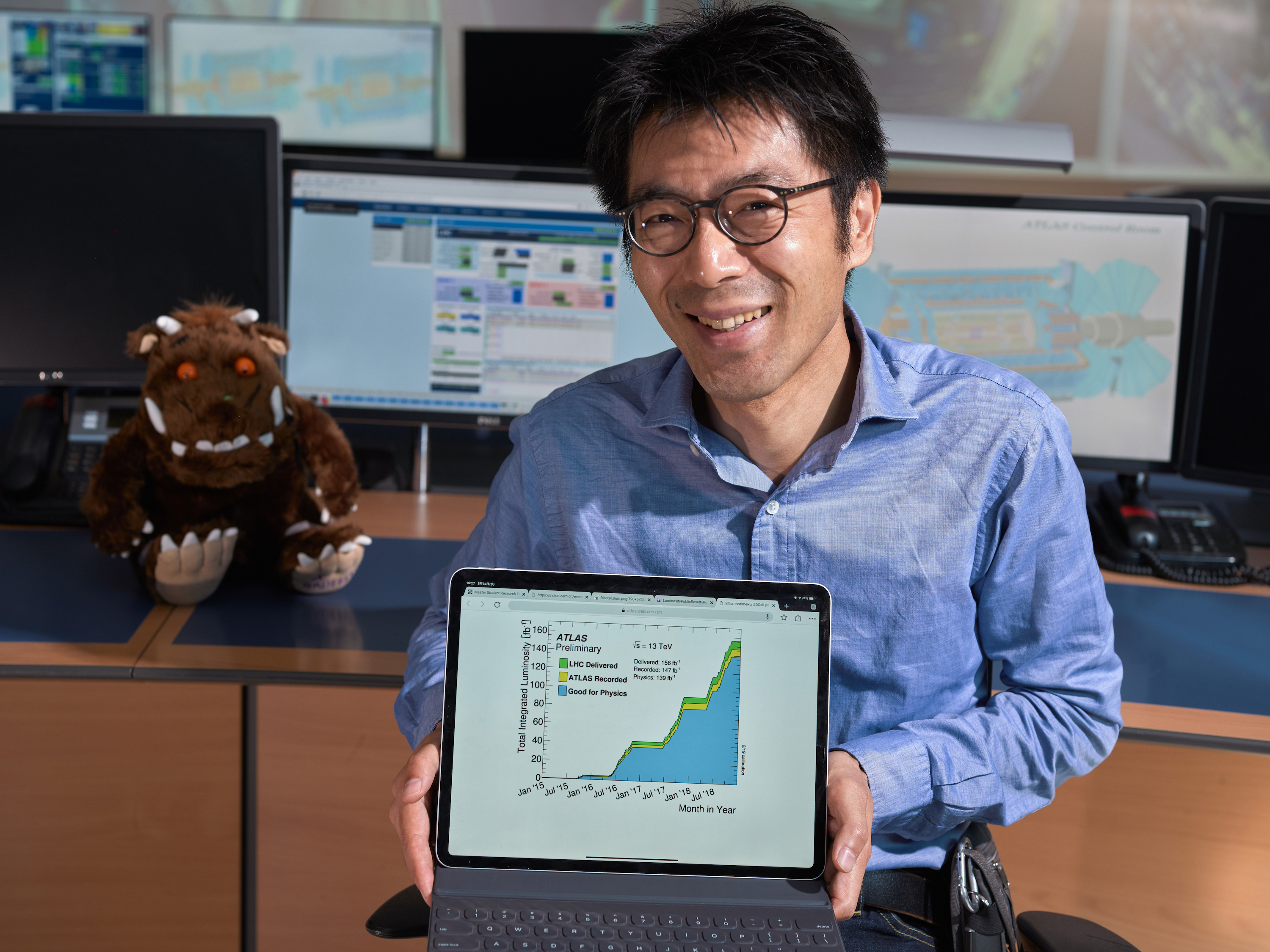First collisions in ATLAS
23 November 2009 | By

A few days ago, loud cheers and happy faces filled the ATLAS Control Room while the whole detector lit up: protons are back at the experiment's door, and everybody forgot in a second the long year of waiting for the Large Hadron Collider (LHC) to resume operation.
Today, everybody was confidently expecting the LHC to start colliding beams after only a weekend of tuning. And indeed, the very first collisions at 0.9 TeV total energy have been observed in ATLAS, greeted by a less explosive joy but by a deeper emotion: this is the first time ever that we see real - not simulated - particle tracks spreading out from the interaction point in the middle of the detector.
"This is great news, the start of a fantastic era of physics and hopefully discoveries after 20 years' work by the international community to build a machine and detectors of unprecedented complexity and performance," said ATLAS spokesperson, Fabiola Gianotti.

November's "launch" of the LHC is similar to launching a rocket to Mars with a rover. The excitement on launch day is very high, but the science will begin a few months later when the rover lands and even then it takes some time to collect data.
ATLAS won't be roving through physics for some time, but the champagne cheers reflected the excitement of the launch. (See photos of the ATLAS control room scenes.)
Collisions at an energy of 7 TeV are expected in March 2010.




